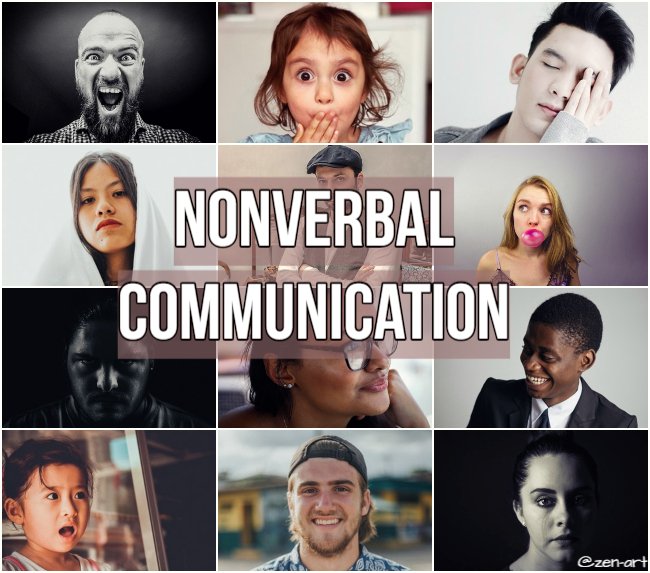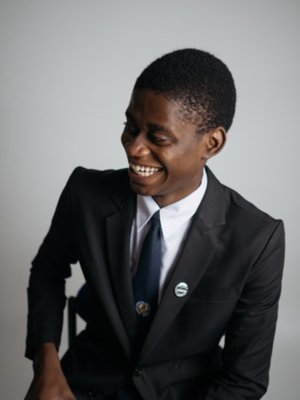Communication is the foundation for every kind of relationship. From friendship to business, we interact with people on a daily basis. Those interactions have our intentional behavior but they also contain wordless signals and actions that are out of our control. Nonverbal communication is emotional in its nature and instinctive and we have less conscious control over it. If you are speaking to a person and there is a huge difference between verbal and nonverbal, always trust the nonverbal.

There are two important things to have in mind:
a) cultural context
A thumbs up gesture or an ok sign we make by connecting our thumb and forefinger in a circle are considered offensive and threatening in some Arabic countries while they correspond to money in Japan. Shaking your had left and right means no in the west but if you go to India it means yes. Whenever you are traveling, make sure you learn not only the customs of a specific country but also their ways of communicating. It will help you understand people better and be understood clearly.
b) lack of nonverbal communication
Since our body language is in great part controlled subconsciously, a lack of it indicates that a person speaking is controlling it consciously and in that way trying to hide something by faking their reactions and hiding their true emotions. Nonverbal signals provide additional information to the verbal communication and are in their nature, completely natural. Their lack indicates that a person you are speaking to is not being entirely honest with you.

Before we go over all seven types of nonverbal communication and explain the differences, let's see why the nonverbal part is so important and how it helps us to understand each other better. Let's look at the benefits.
Benefits of nonverbal communication:
a) regulation of the communication's flow
b) providing information about emotional state
c) giving feedback
d) defining the relationship
Our body language and our gestures can make a difference between a conversation continuing or ending. A simple raise of a hand can signal stop while our eyebrows raising can send a message we are surprised with what other person is saying and wish they would change their words. Nonverbal messages strongly affect our relationships, just watch how many times a person touches you when he or she is speaking to you.
The best thing to do now is to go over every type of nonverbal communication individually so let us do that and see what it can teach us about people we speak to.


With the right and strong facial expression we sometimes do not even need words. A frown or a smile carry a powerful message. We know in an instant if a person next to us is reacting in a positive or in a negative way to what we are saying. Faces are the first thing we see in people and luckily, 5 most often used expression are the same in cultures all over the world. Happiness, sadness, anger, disgust, and fear will look the same on your face as they will on a person on another continent. They are universal.
We are expressive beings and when we talk amongst each other, our faces always tell their own story. Take a closer look how people will blink more often when they get irritated or feel any kind of discomfort. We wiggle our noses, bite our lips or raise our eyebrows.


Whenever you are communicating with a person, take a closer look at how they are sitting or standing. Observe if they are "open" or "closed". Notice if they have arms crossed over their chest or are they legs crossed when sitting. Same goes for holding objects in front or beside our bodies. Those are all communication blockages or walls we build when we do not want to open ourselves to another person.
Posture conveys a great deal on information. It can be defensive, peaceful or attacking. Standing with one of your legs in front of another is considered hostile while if your one foot is turned away or facing the opposite direction, you are showing impatience and a wish to leave the conversation. On the other hand, if you are leaning towards a person gently, you are showing interest. Just keep in mind that holding your hands in pockets is considered rude in most of the countries because you are hiding them and not being honest just as holding your hands on your hips is an open sign of aggression.


Have you ever given someone "the finger"? That is a very powerful gesture but there are many others that we (hopefully) use more often than that naughty middle finger. Gestures vary from one culture to another and we have to be careful when using them. It is common to wave and raise our hands when we talk and look at our watch when we find someone to be boring or tedious.
There are instances when we say something that we immediately realize we should not have and then cover our mouth with a hand. When we want to silence someone, we put just one finger over our mouth. We use our fingers on a daily basic for pointing and showing numeric amounts, giving direction and explaining sizes and shapes. From clapping and raising a hand to signal a stop to waving our arms like chickens, gestures play an important part in our daily lives.


People are visual beings and no matter how hard we try not to judge by appearances, we often do. Visual sense is the most dominant one for most people and even if you do not realize it, you are looking at the enormous amount of data every day, including other people. The way we look at things tells a big story. We can look at someone with interest, affection, attraction, or hostility and maintaining eye contact during communication shows respect, interest, and maintains the flow of conversation.
If a person you are talking to is having a steady eye contact, a normal one, it is a sign of telling the truth as the opposite behavior like shifting gaze is an indicator that someone is being deceptive. When you want to be sure if a person likes you, just look at the pupils. Our pupils dilate when we encounter people or things that we like.


Paralinguistics is the vocal communication that is not actual recognisable language. This includes our tone of voice, loudness, the speed of talking, and our pitch. I am sure that you are familiar with a phrase "It is not what you say, it is how you say it." The exact same sentence can have a different effect on our listener if we use a different tone of voice. We can shout out in rage that we are "fine" or whisper in a shy way, it will not be understood in the same way.
When we are excited we tend to speak faster than when we are relaxed and when we are annoyed or provoked, sarcastic tone of voice comes out. Speaking in a cold tone of voice or in a happy one can make a difference between getting that message across or not. Keep that in mind when you are listening to others.


Personal space or proxemics is an important part of communication. The amount of space we need between us and another person depends on social norms and culture but it also has a lot to do with our personality and level of familiarity with others. When we shorten the space, it could be seen as a sign of aggression and it is normal to be at some distance from the person we are talking to.
The usual amount of space between people who are having a casual conversation is between 18 inches and 4 feet but that changes if we have feelings for another person. When speaking to a friend or our lover, it is normal to stand closer. Whenever you want to check if someone likes you and considers you to be more than just an acquaintance, try stepping closer into his or hers personal space. If a person does not flinch or step back, be sure that she is comfortable around you and feels safe in your company.


For all of you who will ever have a chance to shake my hand, be sure that if I receive a weak handshake you will never again see me. I am not sure if anything annoys me more than a weak "dead-fish like" handshake. But... Putting my personal preferences aside, a touch plays a big role in nonverbal communication. A slap on the back gives a message of pride and supporting while patting someone on the back of their head is patronizing.
It is interesting to see how sex differences play a role in this type of nonverbal communication. Women are more keen to use touch to show care and concern while men do it to assert power and control. Regardless of our gender, we seem to touch those who we love more than those we do not but the amount of touching is a personal preference. I personally, hug my friends to greet them, those that allow me, of course :)
Nonverbal communication can’t be faked.
We may all be instructed how to behave, NLP classes will teach us how to stand, sit and talk to people but there is no way we can turn our emotions off since they are the ones which dictate nonverbal communication. We can’t control all of the signals we’re constantly sending while talking to others, we are not even aware of them.
According to Edward G. Wertheim, Ph.D. from The Importance of Effective Communication there are 5 major roles that nonverbal communication plays:
Accenting
Repetition
Substitution
Contradiction
Complementing
Nonverbal communication can underline a verbal message, repeat or substitute it. It can also contradict a verbal message or complement it.

I am curious to know what message your body language is giving right now. Are you tired of reading such a long post or did I capture your interest? Let me know in the comments below. Until next time, KEEP YOUR SMILE ON!


To read more about this topic, check out these references:
- Types of Nonverbal communication
- Improving Your Nonverbal Skills and Reading Body Language
- Nonverbal communication
All images used in this post were created using those I found on unsplash.com They are under CC0 license and free for personal and commercial use. You can check the people who made the original photos by following these links: cristian_newman, hermez777, brianknd, andredoesphoto, aplaceforcreation, philipegd, wooozxh, quinten149, goldensson, vincefleming, gzanato, lobostudiohamburg, pwign, berwincoroza


@steemitbloggers
